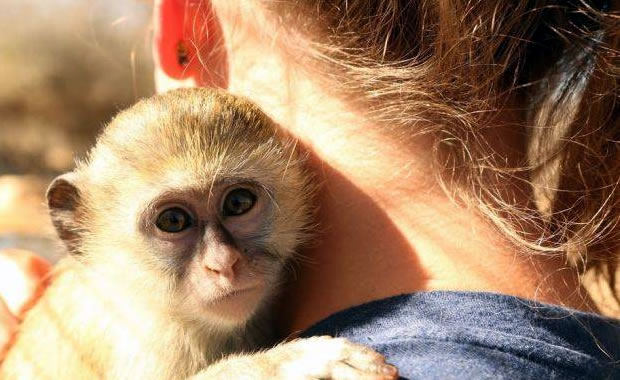
Creature Profile
Sambar Deer is a mammal from the family Cervidae. Other common names for this creature include Indian Sambar and Sambar. Its body is covered with a hairy coat that is colored yellowish-brown to dark gray. Its underside is usually dark or chestnut in color. Its hairs are generally long and more so around the neck particularly in the males. The Sambar Deer has a long black tail. The underside of this tail is usually White in color. Males have antlers and tend to be heavier and darker. Their antlers can grow up to 42 inches long and have 3 or 4 tines (points) and are shed periodically. An adult Sambar Deer can grow up to 705 lbs heavy and around 100 inches long.
Sambar Deer feeds on young shoots of grass, fruits that are fallen, and vines. It also feeds on berries, herbs, buds, and bark of young trees. The male often visits salt licks to abstain minerals that are necessary to for antlers to grow. This Deer is chiefly confined to secondary are primary forest that are mature. It also occurs in arid, oak, pine, and thorn forests and also deciduous forests. It is mainly active at around dusk and dawn. It is described as being nocturnal and is not a migrant animal. Males are nomadic but form territories during breeding season though there is no specific breeding season in this animal. During the breeding season the males are aggressive to each other. They mate any sexually mature female that enters the territory. A male can have up to 8 females within his territory. Breeding activities peaks from September to January. This species gestates for 9 months after which one fawn (offspring) is born. The fawns are very active and have brown hair that has lighter spots immediately after birth.
Sambar Deer is in rapid reduction of its numbers in most of the areas where it occur. No clear data exists to show the estimated population globally for this species. It is threatened by factors such as; intensive hunting and encroachment of its habitats. These two have been the major cause of its decline. Samba Deer is also predated upon especially by the tiger. This animal is listed as vulnerable under the IUCN Red List. Other conservation actions taken include: its occurrence in protected areas, prohibition of its hunting, and captive breeding among others. These conservation actions have helped. However more need to be done.
Wikipedia Article

|
Wikipedia Article Copyright Notice: This article is licensed under the GNU Free Documentation License. It uses material from the Wikipedia article "Sambar deer". |
March 17, 2023
Glenn, C. R. 2006. "Earth's Endangered Creatures - Sambar Deer Facts" (Online). Accessed 4/18/2024 at http://earthsendangered.com/profile.asp?sp=12863&ID=3.
Need more Sambar Deer facts?




